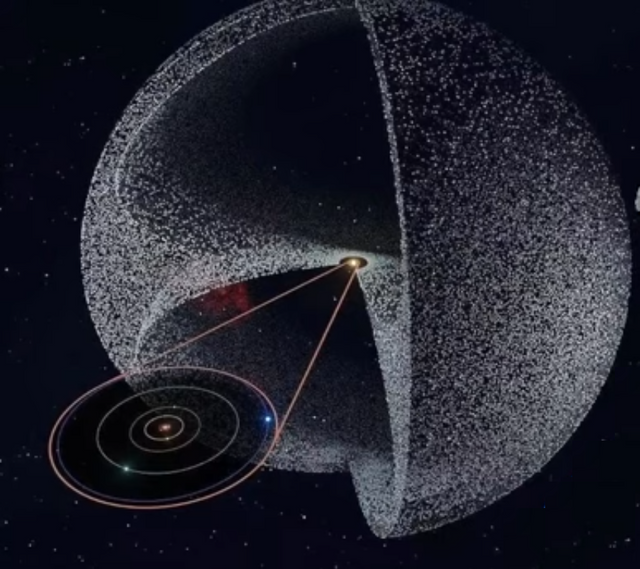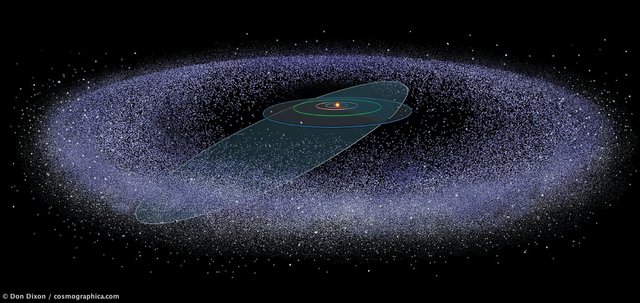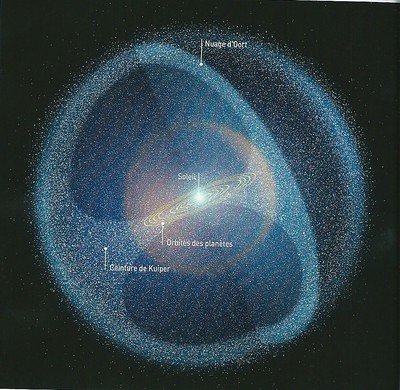There is more beyond our solar system.
There is more beyond our solar system.

Souce
In our imagination Pluto is still the border, beyond Pluto are the mysterious regions of the Kuiper belt and the Oort cloud, the planetary solar system is that little point in the center, there are all the planets and the Oort cloud would extend up to almost a light year, some say a little more.

Souce
The solar system continues to be the Oort cloud, and in the Oort cloud, beyond Neptune, beyond Pluto, at the edge of the solar system, there may be some very strange things, but what happens out there beyond Pluto is very difficult to grasp. Even so, we know that there are certain things that are not there, such as a black hole, at least not one of known stellar mass, since we would notice it. The entire solar system would be orbiting that black hole, since even the smallest black hole has more mass than the sun. It would have at least three or four solar masses.

Souce
There are also other extinctions caused by various factors, such as massive eruptions, and there are mass extinctions of varying sizes. The one that occurred 11 million years ago was a partial extinction, affecting mammals, but not all of them, obviously, so it is quite relative. The point is that this theory from 1984 has been practically ruled out, and practically no one defends it because our observatory technology, both on land and in space, has multiplied enormously.
The images without reference were created with AI
Thank you for visiting my blog. If you like posts about #science, #planet, #politics, #rights #crypto, #traveling and discovering secrets and beauties of the #universe, feel free to Follow me as these are the topics I write about the most. Have a wonderful day and stay on this great platform :) :)

